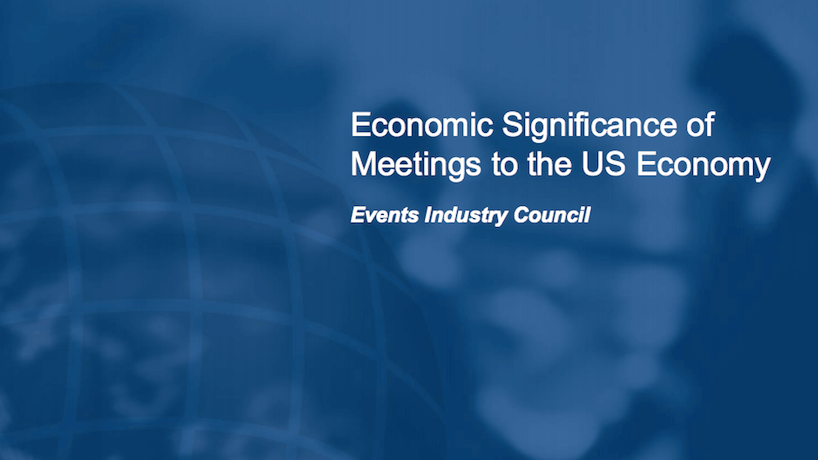As the events industry aims to articulate the economic value of face-to-face meetings and conferences, the findings of a new report — The Economic Significance of Meetings to the US Economy, an update to the 2009 report by the same name — from Oxford Economics, the Events Industry Council, and the Meetings Mean Business Coalition, offer a leg up.
Adam Sacks, founder and president of Tourism Economics, an Oxford Economics company, said in a press briefing on Feb. 21 that the study calculated three levels of impact: direct, indirect, and induced spending. Indirect spending includes revenue streams such as the utility bills from a trade show, and the induced category relates to the trickle-down spending from employees who earn wages due to events-industry-related activities. “For every dollar spent on face-to-face meetings and business events in 2016, it generated an additional $1.60 in benefits to the U.S. economy,” Sacks said in the briefing about the findings. “It’s a 160-percent return on investment.”
That return added up to some very large numbers. Sacks said that meetings supported $845 billion in business sales, $104 billion in federal, state, and local taxes, and $446 billion of the country’s GDP. In addition to spending, the industry supported nearly six million individual jobs. “These are large numbers,” Sacks said, but they are even more meaningful “in relation to other industries in the U.S.”
In terms of jobs, the meetings and events industry creates more direct jobs than large manufacturing sectors such as automotive, chemicals, and food. The industry also employs more workers than the telecommunications sector or oil and gas. “The services provided by the meetings industry often go unnoticed,” said Paul Van Deventer, president and CEO of Meeting Professionals International and co-chair of the Meetings Mean Business Coalition, who participated in the briefing. “But the impact is unmistakable.”
The Importance of International Attendance
The findings underscored that in order to expand that impact in 2018 and beyond, the events industry will need assistance from the government to make sure that attendees from outside the U.S. can enter the country with ease. In 2016, six million international attendees came to the U.S. for events and conferences. While that audience only comprises approximately 2 percent of the 251 million attendees at U.S. events, they represented nearly 12 percent of direct spending, due to the fact that they typically stay longer and spend more money. “This has important implications for visa policies and the Open Skies agreements,” Sacks said.
“On the international front, in the past, we have seen some visa policies that have not always been conducive to [assisting] international participants,” Van Deventer said. “This research creates the foundation to advocate for visa policies that are set up in such a way to make sure that international participants can come.”
Growing and Growing
The 2016 numbers look even more dramatic when the industry looks in the rearview mirror. Sacks compared the 2016 findings with data from 2009 when the report was first conducted. “The industry’s economic value has grown by 23 percent,” Sacks said. “If we go back in time to 2009, there were experts that were foretelling the death of the meetings industry. There was a lot of negative sentiment and questions about whether companies were being responsible with [their event budgets]. There were a lot of questions about the viability of this industry. The new report shows that the meetings industry is as strong as ever, and it continues to grow.”
Event professionals can celebrate that growth trajectory at the upcoming Global Meetings Industry Day on April 12. Click here for a list of programs around the world.
PCMA and the PCMA Education Foundation are strong supporters of the Events Industry Council and Meetings Mean Business Coalition and proud to contribute funds to fuel the study of how meetings and events make a huge impact on the global economy. To learn more about how the Education Foundation helps power research and scholarships, click here to read the 2017 Impact Report.

